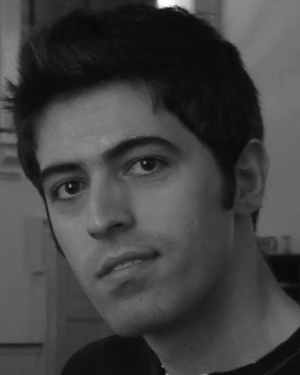Abstract:
Automatically learned quality assessment for images has recently become a hot topic due to its usefulness in a wide variety of applications, such as evaluating image capt...Show MoreMetadata
Abstract:
Automatically learned quality assessment for images has recently become a hot topic due to its usefulness in a wide variety of applications, such as evaluating image capture pipelines, storage techniques, and sharing media. Despite the subjective nature of this problem, most existing methods only predict the mean opinion score provided by data sets, such as AVA and TID2013. Our approach differs from others in that we predict the distribution of human opinion scores using a convolutional neural network. Our architecture also has the advantage of being significantly simpler than other methods with comparable performance. Our proposed approach relies on the success (and retraining) of proven, state-of-the-art deep object recognition networks. Our resulting network can be used to not only score images reliably and with high correlation to human perception, but also to assist with adaptation and optimization of photo editing/enhancement algorithms in a photographic pipeline. All this is done without need for a “golden” reference image, consequently allowing for single-image, semantic- and perceptually-aware, no-reference quality assessment.
Published in: IEEE Transactions on Image Processing ( Volume: 27, Issue: 8, August 2018)

Google Inc, Mountain View, CA, US
Hossein Talebi received the B.S. and M.S. degrees in electrical engineering from the Isfahan University of Technology, Iran, and the Ph.D. degree in electrical engineering from the University of California at Santa Cruz, Santa Cruz, CA, USA. Since 2015, he has been with Google Research, Mountain View, CA, USA, where he involved in computational imaging, image processing, and machine learning problems.
Hossein Talebi received the B.S. and M.S. degrees in electrical engineering from the Isfahan University of Technology, Iran, and the Ph.D. degree in electrical engineering from the University of California at Santa Cruz, Santa Cruz, CA, USA. Since 2015, he has been with Google Research, Mountain View, CA, USA, where he involved in computational imaging, image processing, and machine learning problems.View more

Google Inc, Mountain View, CA, US
Peyman Milanfar (F’10) received the bachelor’s degree in electrical engineering and mathematics from the University of California (UC) at Berkeley, Berkeley, and the M.S. and Ph.D. degrees in electrical engineering from the Massachusetts Institute of Technology. He was a Professor of electrical engineering at UC Santa Cruz from 1999 to 2014. He was an Associate Dean for research with the School of Engineering from 2010 to...Show More
Peyman Milanfar (F’10) received the bachelor’s degree in electrical engineering and mathematics from the University of California (UC) at Berkeley, Berkeley, and the M.S. and Ph.D. degrees in electrical engineering from the Massachusetts Institute of Technology. He was a Professor of electrical engineering at UC Santa Cruz from 1999 to 2014. He was an Associate Dean for research with the School of Engineering from 2010 to...View more

Google Inc, Mountain View, CA, US
Hossein Talebi received the B.S. and M.S. degrees in electrical engineering from the Isfahan University of Technology, Iran, and the Ph.D. degree in electrical engineering from the University of California at Santa Cruz, Santa Cruz, CA, USA. Since 2015, he has been with Google Research, Mountain View, CA, USA, where he involved in computational imaging, image processing, and machine learning problems.
Hossein Talebi received the B.S. and M.S. degrees in electrical engineering from the Isfahan University of Technology, Iran, and the Ph.D. degree in electrical engineering from the University of California at Santa Cruz, Santa Cruz, CA, USA. Since 2015, he has been with Google Research, Mountain View, CA, USA, where he involved in computational imaging, image processing, and machine learning problems.View more

Google Inc, Mountain View, CA, US
Peyman Milanfar (F’10) received the bachelor’s degree in electrical engineering and mathematics from the University of California (UC) at Berkeley, Berkeley, and the M.S. and Ph.D. degrees in electrical engineering from the Massachusetts Institute of Technology. He was a Professor of electrical engineering at UC Santa Cruz from 1999 to 2014. He was an Associate Dean for research with the School of Engineering from 2010 to 2012. From 2012 to 2014, he was on leave at Google-x, where he helped to develop the imaging pipeline for Google Glass. He currently leads the Computational Imaging Team in Google Research. He holds 12 U.S. patents, several of which are commercially licensed. He founded MotionDSP, which was acquired by Cubic Inc. (NYSE:CUB). He has been a keynote speaker at numerous technical conferences, including the Picture Coding Symposium, SIAM Imaging Sciences, SPIE, and the International Conference on Multimedia. Along with his students, he received several best paper awards from the IEEE Signal Processing Society. He is a Distinguished Lecturer of the IEEE Signal Processing Society for contributions to inverse problems and super-resolution in imaging.
Peyman Milanfar (F’10) received the bachelor’s degree in electrical engineering and mathematics from the University of California (UC) at Berkeley, Berkeley, and the M.S. and Ph.D. degrees in electrical engineering from the Massachusetts Institute of Technology. He was a Professor of electrical engineering at UC Santa Cruz from 1999 to 2014. He was an Associate Dean for research with the School of Engineering from 2010 to 2012. From 2012 to 2014, he was on leave at Google-x, where he helped to develop the imaging pipeline for Google Glass. He currently leads the Computational Imaging Team in Google Research. He holds 12 U.S. patents, several of which are commercially licensed. He founded MotionDSP, which was acquired by Cubic Inc. (NYSE:CUB). He has been a keynote speaker at numerous technical conferences, including the Picture Coding Symposium, SIAM Imaging Sciences, SPIE, and the International Conference on Multimedia. Along with his students, he received several best paper awards from the IEEE Signal Processing Society. He is a Distinguished Lecturer of the IEEE Signal Processing Society for contributions to inverse problems and super-resolution in imaging.View more

